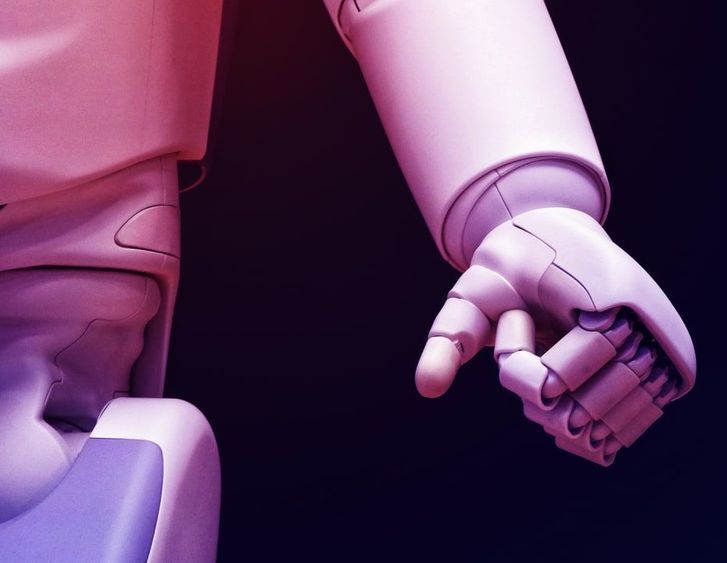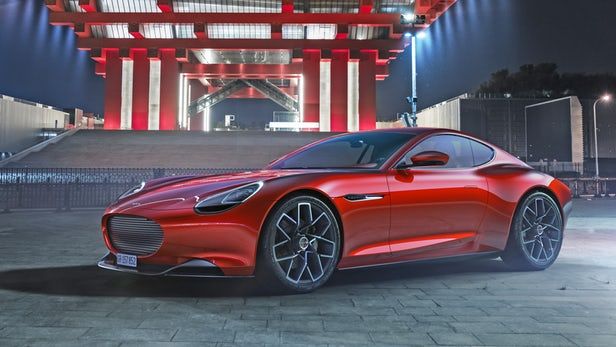Page 8827
May 13, 2019
Watch Future Mars Settlers Ride a Space Elevator in This ‘Aniara’ Sci-Fi Film Clip
Posted by Klaus Baldauf in categories: futurism, space
May 13, 2019
Scientists just created machines that eat and evolve just like living organisms
Posted by Quinn Sena in category: food
May 13, 2019
Common food additive found to affect gut microbiota
Posted by Xavier Rosseel in categories: biotech/medical, food, health, nanotechnology
University of Sydney research provides new evidence that nanoparticles, which are present in many food items, may have a substantial and harmful influence on human health.
The study investigated the health impacts of food additive E171 (titanium dioxide nanoparticles) which is commonly used in high quantities in foods and some medicines as a whitening agent. Found in more than 900 food products such as chewing gum and mayonnaise, E171 is consumed in high proportion everyday by the general population.
Published in Frontiers in Nutrition, the mice study found that consumption of food containing E171 has an impact on the gut microbiota (defined by the trillions of bacteria that inhabit the gut) which could trigger diseases such as inflammatory bowel diseases and colorectal cancer.
Continue reading “Common food additive found to affect gut microbiota” »
May 13, 2019
Awakening stem cells to unlock the brain’s regenerative potential
Posted by Paul Battista in categories: biotech/medical, chemistry, neuroscience
The human body has powerful healing abilities. But treating brain disorders is no easy task, as brain cells—neurons—have limited ability to regenerate. Nonetheless, stem cells are a form of natural backup, a vestige of our days as still-developing embryos.
The difficulty is that with age, neural stem cells ‘fall asleep’ and become harder to wake up when repairs are needed. Despite efforts to harness these cells to treat neurological damage, scientists have until recently been unsuccessful in decoding the underlying ‘sleep’ mechanism.
Now, researchers at Kyoto University studying brain chemistry in mice have revealed the ebb and flow of gene expression that may wake neural stem cells from their slumber. These findings, which may also apply to stem cells elsewhere in the body, were recently published in the journal Genes & Development.
Continue reading “Awakening stem cells to unlock the brain’s regenerative potential” »
May 13, 2019
If Electric Car Maker Enovate Can Produce An EV With A Solid-State Battery, Everything Changes
Posted by Quinn Sena in categories: sustainability, transportation
Chinese EV maker Enovate, which already has an electric SUV on the market, is claiming their upcoming 2021 ME-S model will arrive in 2021 with a long-sought-after power source: A solid-state battery. If they can pull off the tech, it could signal a revolution in the EV market.
May 13, 2019
Why Extreme Urban Farm Produce Will Be On All Menus Of The Future
Posted by Quinn Sena in categories: food, sustainability
May 13, 2019
Piëch doubles down on its outrageous sub-5-minute EV charging claims
Posted by Quinn Sena in category: futurism
People will stop complaining about EV range the minute fast charging is a reality, and new startup Piëch reckons it’s got the goods to deliver an 80 percent charge on a 311-mile (500 km) range battery in four minutes, 40 seconds, which is vastly quicker than anything else on the market. Why not just launch the battery, then?
May 13, 2019
Breast cancer cells in mice tricked into turning into fat cells
Posted by Quinn Sena in category: biotech/medical
As cancer cells respond to cues in their microenvironment, they can enter a highly plastic state in which they are susceptible to transdifferentiation into a different type of cell. Researchers at the University of Basel in Switzerland exploited this critical phase, known as an epithelial-mesenchymal transition (EMT), to coax breast cancer cells in mice to turn into harmless fat cells. The proof-of-concept study appears January 14 in the journal Cancer Cell.
“The breast cancer cells that underwent an EMT not only differentiated into fat cells, but also completely stopped proliferating,” says first author Gerhard Christofori, professor of biochemistry at the University of Basel. What’s more, the primary tumor did not metastasize. “As far as we can tell from long-term culture experiments, the cancer cells-turned-fat cells remain fat cells and do not revert back to breast cancer cells,” he says.
Epithelial cells undergoing EMT regress from terminally differentiated cells to a more immature state reminiscent of stem cells. EMT is essential for embryonic development, during which stem cells differentiate into a variety of cell types throughout the body, and for tissue regeneration such as wound healing. EMT and the inverse process, mesenchymal-epithelial transition (MET), are implicated in cancer’s ability to metastasize.
Continue reading “Breast cancer cells in mice tricked into turning into fat cells” »
After billions of years of cooling, the Moon continues to shrink. This NASA study shows how wrinkle ridges, curved hills and shallow trenches are forming as the Moon loses heat: https://go.nasa.gov/2VpcOR3

















